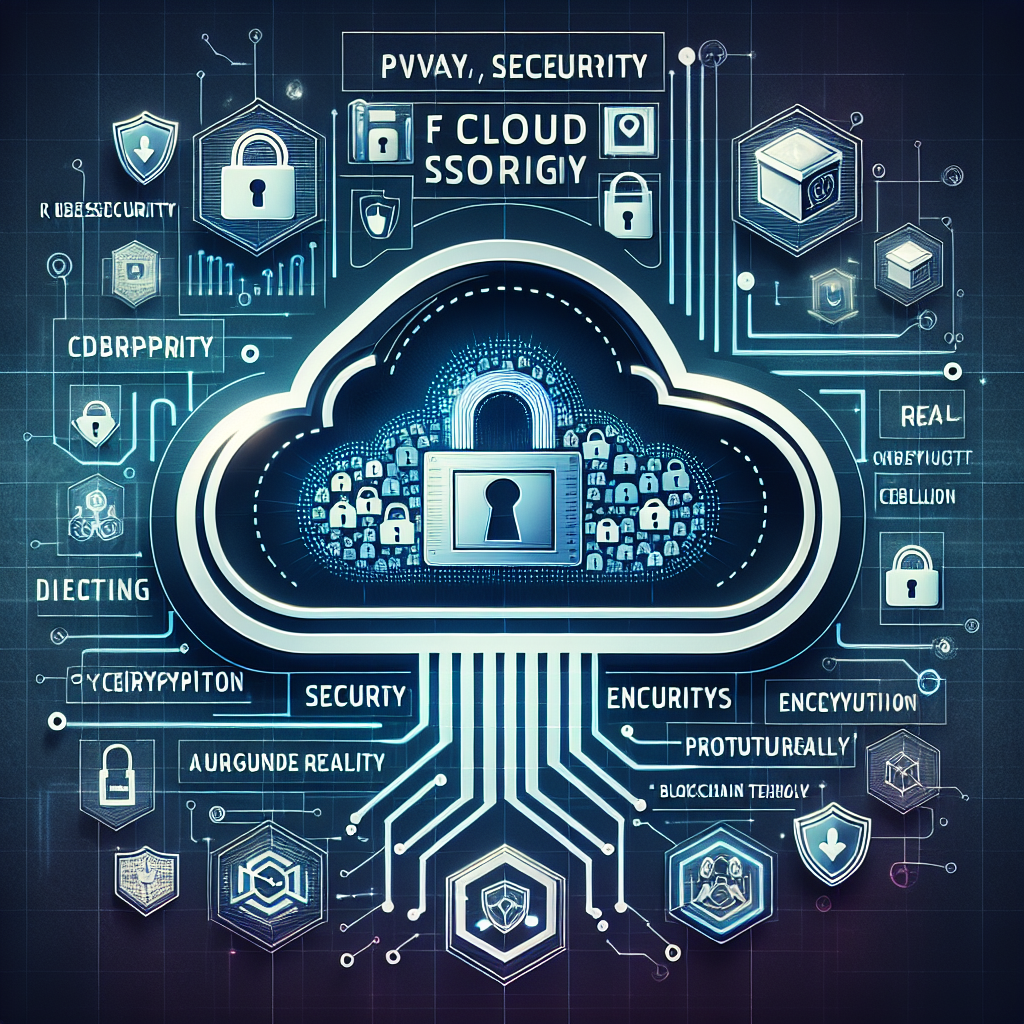Unlock encrypted content
Please enter your SSCE key to initiate on-the-fly decryption.
Decryption key: (Click cancel if you don't have the key)
Copied link to clipboard.
This feature is unavailable for free accounts. Upgrade now and enjoy all Premium benefits.
Go Premium!
This feature is unavailable for free accounts. Upgrade now and enjoy all Premium benefits.
Go Premium!
Please open this page in browser ( Google Chrome or Safari ) to use this feature.
Open In Browser
The Future of Data Storage: Exploring Cybernetics, Smart Cities, and Remote Access Innovations.
Random related video for this blog.
Copied share link to clipboard.
In today's digital landscape, the need for efficient data storage solutions is more pressing than ever.
Understanding Cybernetics in Data Storage
Cybernetics, the interdisciplinary study of systems, control, and communication in animals and machines, plays a pivotal role in the evolution of data storage solutions. This field is not just about theoretical concepts; it has practical applications that directly influence how we manage data. For instance, systems that utilize cybernetic principles can adaptively learn from data access patterns, optimizing storage allocation and retrieval processes. A compelling case study is the integration of cybernetics into file synchronization technologies. Companies are increasingly deploying intelligent algorithms that analyze user behavior to predict which files are needed most frequently, thus prioritizing their storage. This not only streamlines data access but also enhances system performance. For example, a smart city could implement such a system to manage traffic data more effectively, ensuring that real-time updates are readily accessible to drivers. As we move towards an era dominated by smart cities, the implications of cybernetics extend further. Urban environments are now integrating advanced data storage solutions to manage everything from traffic flows to energy consumption. In these scenarios, data redundancy becomes crucial. By employing techniques such as file redundancy, cities can ensure that critical data remains accessible even in the event of a system failure. This approach not only enhances reliability but also reinforces public trust in smart city initiatives.Remote Access and Mobile File Management
The rise of remote access technologies has transformed how individuals and organizations interact with their data. With mobile file access, users can retrieve and manage their files from virtually anywhere, breaking the traditional shackles of location-based data management. This flexibility is particularly beneficial for remote teams, allowing for seamless collaboration regardless of geographical constraints. Take, for instance, a remote pilotsystems operation. Drone operators often require immediate access to vast amounts of data, from flight logs to environmental assessments. With effective mobile file access solutions, they can synchronize files in real-time, ensuring that the most current information is at their fingertips while in the field. This capability not only enhances operational efficiency but also improves safety, as operators can make informed decisions based on real-time data. Moreover, mobile file access is being augmented by innovations in encryption and security measures. As data is accessed remotely, concerns regarding privacy and data integrity become paramount. Solutions like Secure-Solo-Cipher Encryption (SSCE) offer an added layer of protection, ensuring that sensitive information remains secure during transmission. This is particularly important in sectors such as healthcare or finance, where data breaches can have dire consequences.
File Synchronization and Redundancy Strategies
File synchronization technologies are essential for maintaining data consistency across diverse platforms and devices. As organizations increasingly adopt hybrid work models, the ability to synchronize files effortlessly becomes a competitive advantage. Companies that implement robust synchronization strategies can ensure that all team members are working with the latest information, thereby reducing errors and enhancing productivity. For example, consider a marketing team working on a campaign. By utilizing advanced file synchronization tools, they can ensure that all assets, including images, videos, and documents, are consistently updated across all devices. This not only saves time but also fosters creativity, as team members can collaborate in real-time, sharing insights and feedback instantly. Additionally, file redundancy strategies are integral to safeguarding against data loss. Implementing a system that automatically backs up email attachments and other critical files can prevent catastrophic losses due to accidental deletions or hardware failures. Organizations can leverage platforms that provide comprehensive backup solutions, ensuring that their data is always retrievable. For instance, services like FileLu offer email attachment backup, allowing users to organize and secure their important communications efficiently. As we advance further into the digital age, the convergence of these technologies—cybernetics, remote access, and file synchronization—will shape the future of data management. The potential for innovation is vast, paving the way for smarter, more resilient systems that can adapt to the ever-changing landscape of data storage.Conclusion
The future of data storage is undeniably intertwined with advancements in cybernetics, smart city initiatives, and remote access technologies. As these fields evolve, they will continue to influence how we manage, store, and access data. By embracing innovative solutions like file synchronization, email attachment backup, and mobile file access, organizations can enhance their operational efficiency and ensure the security of their data. As we look ahead, it is essential for businesses to stay informed and adaptable. Investing in robust data management solutions will not only prepare them for the challenges of today but also position them favorably for the opportunities of tomorrow. The landscape of data storage is rapidly changing, and those who harness these advancements will be the leaders of the future.Frequently Asked Questions (FAQs)
Question: What is cybernetics in the context of data storage? Answer:
Cybernetics involves the study of systems and control, which can optimize data management through adaptive learning.
Question: How does remote access improve file management? Answer:
Remote access allows users to manage files from anywhere, enhancing collaboration and flexibility for remote teams.
Question: Why is file redundancy important? Answer:
File redundancy ensures data remains accessible even in case of failures, protecting against data loss.
Question: What are the benefits of email attachment backup? Answer:
Email attachment backup helps organize and secure important communications, preventing accidental losses.
Question: How can businesses utilize file synchronization? Answer:
File synchronization ensures all team members have access to the latest data, enhancing productivity and reducing errors.
By Amelia Isabella.
Email: [email protected]
Related
File Collaboration and Access Control: Empowering Galactic Empires in the...
July 18, 2023
Read More
Autonomous Driving and Brain-Computer Interfaces: A Glimpse into the Future...
July 18, 2023
Read More
Data Redundancy: Advanced Weaponry for Autonomous Vehicles and Space Data...
July 18, 2023
Read More
The Future of Work: Exploring Genetic Algorithms, Advanced Encryption, and...
July 18, 2023
Read More
Robotic Process Automation: Revolutionizing Efficiency and Productivity in the Digital...
July 18, 2023
Read More
FileLu.com: The Reliable Cloud Storage Solution for Secure File Management...
July 18, 2023
Read More
Digital Transformation: Empowering the Future with IoT, Cloud Computing, and...
July 19, 2023
Read More
Popular
Exploring the Intersection of Technology: From Cybersecurity to Augmented Reality...
November 16, 2025
Read More
The Future of Technology: Exploring Biohacking, Space Tourism, and Digital...
November 23, 2025
Read More
The Future of File Sharing: Streamlined Workflows for Photographers and...
November 19, 2025
Read More
Exploring the Benefits of Cloud Storage and Innovative Technologies in...
November 26, 2025
Read More
The Future of Digital Transformation: Exploring Smart Homes, Efficient File...
November 30, 2025
Read More
Latest
The Future of Digital Transformation: Exploring Smart Homes, Efficient File...
November 30, 2025
Read More
Exploring the Benefits of Cloud Storage and Innovative Technologies in...
November 26, 2025
Read More
The Future of Technology: Exploring Biohacking, Space Tourism, and Digital...
November 23, 2025
Read More
The Future of File Sharing: Streamlined Workflows for Photographers and...
November 19, 2025
Read More
Exploring the Intersection of Technology: From Cybersecurity to Augmented Reality...
November 16, 2025
Read More
The Future of File Management: Embracing Edge Computing and Efficient...
November 12, 2025
Read More
The Future of File Sharing: Exploring User-Friendly Solutions and Data...
November 5, 2025
Read More
The Future of Cloud Storage: How FileLu Empowers Creative Professionals...
November 2, 2025
Read More
The Future of Autonomous Technologies: Innovations in Robotics, File Sharing,...
October 29, 2025
Read More
Emerging Technologies Revolutionizing File Management: From Li-Fi to Robust Collaboration...
October 26, 2025
Read More
Emerging Technologies: Exploring the Impact of File Access Auditing, Genetic...
October 19, 2025
Read More
The Future of Data Storage: Exploring Advanced Encryption, Mobile Integration,...
October 5, 2025
Read More
Exploring the Future of Data Management: Security, Efficiency, and Cognitive...
September 28, 2025
Read More
Revolutionizing Data Management: Innovations in Storage, Security, and Sustainable Technology.
September 24, 2025
Read More















